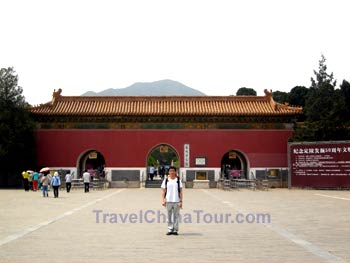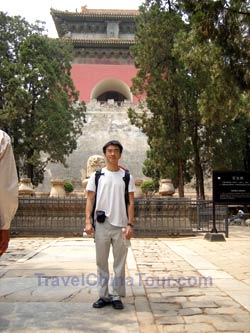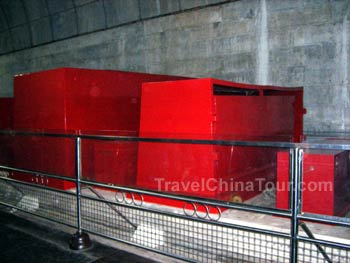The 13 Ming Tombs of Beijing is located at Changping District, which is northwest of Beijing city. Ming Shisanling is what they are called in Chinese, literally meaning, the 13 Ming Tombs. These are 13 tombs of Ming Dynasty emperors. This is one of China's largest royal mausoleums containing also 23 empresses, and one highest ranking imperial concubine.
Construction of this royal cemetery began in 1409, and lasted for over 200 years until the defeat of the Ming Dynasty. The earliest tomb is Changling, which was the tomb for Emperor Chengzu Zhu Di. The succeeding 12 emperors of the Ming Dynasty all had their tombs built around Changling, thus forming the 13 Ming Tombs.
The 13 Ming tombs are as follows, listed in chronological order:
- Changling - emperor Chengzu Zhu Di
- Xianling - emperor Renzong Zhu Gaochi
- Jingling - emperor Xuanzong Zhu Zhanji
- Yuling - emperor Yingzong Zhu Qizhen
- Maoling - emperor Xianzong Zhu Jianshen
- Tailing - emperor Xiaozong Zhu Youcheng
- Kangling - emperor Wuzong Zhu Houzhao
- Yongling - emperor Shizong Zhu Houcong
- Zhaoling - emperor Muzong Zhu Zaihou
- Dingling - emperor Shenzong Zhu Yijun
- Qingling - emperor Guangzong Zhu Changluo
- Deling - emperor Xizong Zhu Youxiao
- Siling - emperor Sizong Zhu Youjian
These 13 Ming Tombs collectively cover an area of over 40 square kilometers, surrounded by mountains on three sides, and open to the Beijing Plains in its south side. Mangshan Mountain (snake mountain) sits on the left side of the burial grounds, while Huyu Mountain (Tiger Mountain) is on the right side - symbolizing that the burial grounds are protected by the "green dragon" and the "white tiger".

The layout design of the 13 Ming Tombs are rather similar; however they differ in size and the complexity of their structure is also different. Each tomb is built against a mountain side. Its entrance starts with a front gate, followed by Ling'enmen (gate of Eminent Favor), Ling'endian (Hall of Eminent Favor), Lingxing Gate (Star in Charge of Studies), 5 sacrificial stones, a Soul Tower, and then the main burial chambers.
The Ming Tombs were added to the first list of historical and cultural relics under state protection in 1961, and in 2003 was added to the World Heritage list by UNESCO. So far, the 3 Ming Tombs of Changling, Dingling, and Zhaoling are opened for tourist attractions.
Each Tomb complex has a "sacred passage", where the coffins of emperors were carried to their resting place through this passage. The Changling Tomb has the longest and most diverse monumental statues along its sacred passage. It is a 7km long passage that leads to the front gate of Changling. Along the sacred passage is the Stone Memorial Arch, Dagongmen (Great Palace Gate), Pavilion of Divine Merit Stele, Wangzhu (Watch Pole), stone statues, and Lingxing gate.

The Soul Tower in the background.
Changling is the mausoleum for Ming Emperor Zhu Di and Empress Xu. It is the earliest and largest of the 13 Ming Tombs. The main structure of Changling is the Ling'endian (Hall of Eminent Favor), where the sacrificial ceremony was held. It was built in 1427, placed on a 3 story marble terrace, and modeled after the royal palace of the Ming Dynasty. The Ling'endian covers an area of almost 2,000 square meters, and is one of the largest wooden structures in China.
Dingling is the mausoleum of Emperor Shenzong Zhu Yijun, and his two empresses Xiaoduan and Xiaojing. Emperor Zhu Yijun became emperor at only age 10 and ruled for 48 years. The construction of his tomb began when he was only 22 years old, and took 6 years to complete. Dingling Tomb is the only Ming Tomb that has been excavated so far, uncovering more than 3,000 relics and treasures.
The underground palace of Dingling covers and area of 1,195 square meters, made up of 5 chambers - front, middle, rear, left, and right chambers. The entire tomb was built of solid stone. The rear chamber is the main chamber of the tomb where the coffins of the emperor and his empresses were placed.

The rear chamber of Dingling containing the coffins of the emperor and empresses.
|